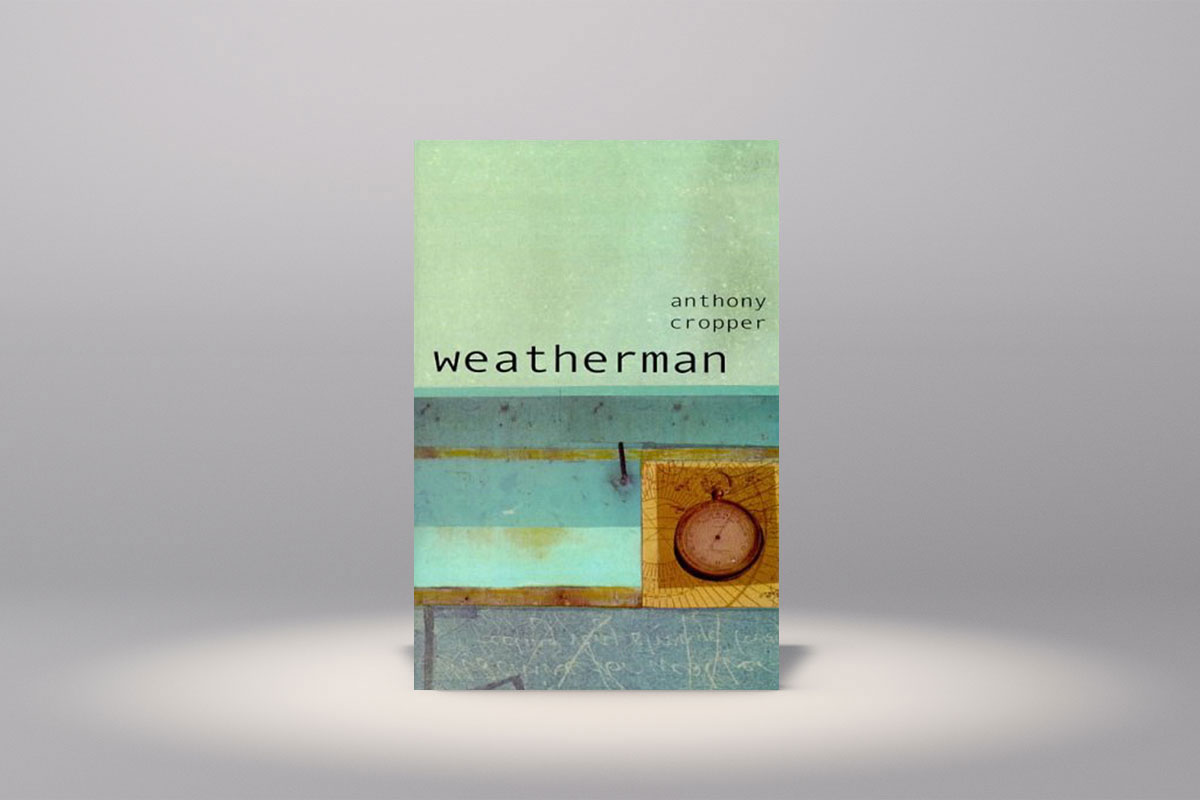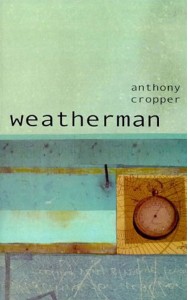In this extract from Weatherman, we learn about cloud formations and how it's impossible to create nothing.
Now here’s a thing. Water evaporates.
Even a block of ice contains heat energy. At zero degrees it still contains heat energy. When someone tells you that for the first time you think, wow. Not ice. There’s no heat in ice. But there is. There’s a lot of heat in something that’s frozen solid.
At absolute zero, which is minus two hundred and seventy three point one five degrees Celsius, there’s supposed to be nothing. Nothing exists at minus two hundred and seventy three degrees Celsius. Now there’s an idea. Nothing. That’s a space with absolutely nothing inside.
A pool evaporates water, a river evaporates water, an ocean evaporates water. Even on the frozen wastes of Alaska some evaporation still occurs. A tiny molecule escapes its field and rises up into the air as a vapour. From a liquid to a gas. And as it rises it cools. It loses energy. That’s the way it goes, generally. As air rises it cools. As a molecule rises it cools. And if it cools far enough it condenses. Then, it becomes a liquid again. Condensation is a gas or a vapour turning back into a liquid. A sweet idea, really. And this, this is the beginning of milky white clouds.
That tiny molecule though needs something to condense around. It needs dust or smoke particles, salt, anything. It needs something. If the air is pure, if there is nothing, then supercooling can occur, and condensation might not occur. But to get a cloud forming we need something in the air; some particles.
We need something.
On a sunny day we sometimes see a single cloud in the sky. A single cloud, motionless, in a sea of blue. Beautiful. But, of course, it’s only an illusion. Not the beauty aspect. The colours. The sky is not really blue, and the cloud is not really white. Take a jar up there for a sample. Try to get a jar full of colour. There is no colour. It’s an illusion. It’s colourless. It’s just a trick of light. Somewhere else the sky might be red, or orange, or green, or salmon pink. Somewhere else it might be a rich and heady mix of damson, violet, maroon, and indigo. There’s not many colours the sky can’t be.
But how come, how come in all that blue, in that sea of blue, in that trick of blue that’s not blue, in all that immensity, how come there’s just a single little cloud?
Well maybe that cloud is like a magnet, and when all those tiny drops of water evaporate, rise up through the air, cool and condense, well maybe they’re drawn to one another like bugs to a light. Maybe that cloud is just a water magnet in the sky.
You know, scientists have tried to create nothing. With all the technology they can muster, with the equipment and brains that have put people on the moon, sunk them to the bottom of the oceans, exploded atoms and cities and peoples lives. With all that technology they still can’t create nothing. It’s incredible. It’s a joke. It’s a bloody funny joke. But, of course, for some people, the inability to create nothing is a problem. That’s when a nothing becomes a something.
Try creating nothing. A space containing nothing; absolutely nothing. The mother of all vacuums. A vacuum to end all vacuums. A space free from the rest of the universe. A space where absolutely nothing from anywhere can be. A nothing like no nothing you can imagine. Not a jot. An idea-less space, a heat-less space, a dust-less space, a light-less space, a cloud-less space, a history-less space, an everything-less space. A nothing inside of a something.
You see, the thing is, we can’t evacuate a space, not totally. They take a box, and try to suck out all its insides. That’s what they do, scientists. They try to suck the insides of things. They get the most powerful pumps you can imagine and draw out the air. Then they get the most powerful coolants you can imagine, and take out the heat. They want to get it all out. A box with nothing. An empty box. A soulless box.
What a present that would be. A box that if opened it’d suck you in at the speed of light.
They’ve been trying for years, you know. Day after day getting it further and further down towards nothing. Minus two hundred and seventy Celsius, minus two hundred and seventy one, then two, then three. Fractionally closer and closer. But they still haven’t arrived. Not yet. With all the will in the world they still haven’t arrived at a space with nothing inside. Minus two hundred and seventy three point one five degrees Celsius. Nought degrees Kelvin. That’s nothing.
They’ve got close though, real close. They’ve got to nought point two eight millionths of a degree away. Nought point two eight millionths of a degree away! That’s 0.00000028 degrees away from nothing. It’s a squidge. But in terms of getting there, they may as well be a million miles away, a billion miles away. It’s more difficult than putting a man on the moon. Than exploding the atom. More difficult than, well, anything.
Perhaps it can’t be done. Maybe nothing does not, cannot, exist.
They talk about space being a vacuum. A vacuum. I suppose it’s how you define it. If it’s a space entirely devoid of matter, then space isn’t a vacuum, not in the true sense. It still has heat energy, for one thing. So it has something, and a vacuum, really, should have nothing. Space isn’t a vacuum. There’s no space entirely devoid of matter. Seems like some things are impossible.
You know, the vast majority of clouds in the sky are not rain bearing. Over ninety percent are not rain bearing, they just float along, they just float in and out of existence. Gas liquid, liquid gas, sometimes solid to liquid to gas. They’re classified under three different types. There’s cumulus; fair weather clouds, stratus; sheet-like clouds, and cirrus; high level clouds.
Cumulus clouds are the ones we get on a summer’s day. They’re the ones that sit lonesome in the belly of the sky. Stratus clouds are the ones that spread themselves across the sky in a huge chalky mass. They’re the ones that give us overcast days, the ones that you think might bring heavy rain. Cirrus clouds are the ones we see high up. They’re the ones that look like little wisps in the air. The ones that look like horses’ tails, or flicks of paint. Cirrus clouds are frozen. They’re composed of ice crystals.
That’s the three. Three layers. Low, middle and high. It’s a bit generalised, but that’s the way of things. As soon as we classify anything it’s in danger of becoming a generalisation. Give it a name, then abuse it. But what the hell. Let’s generalise.

